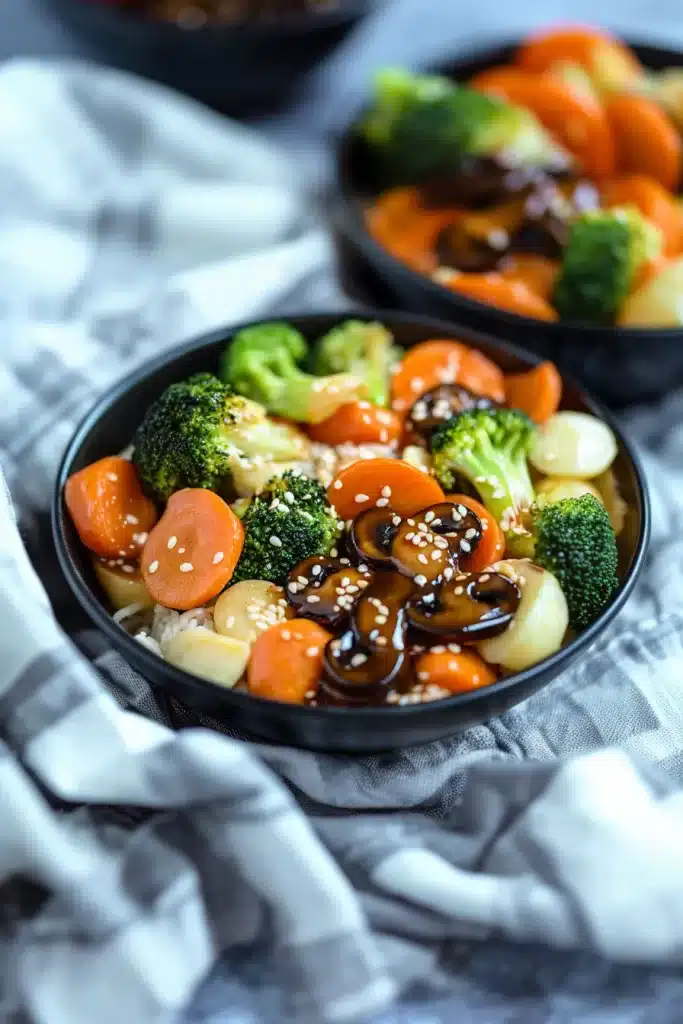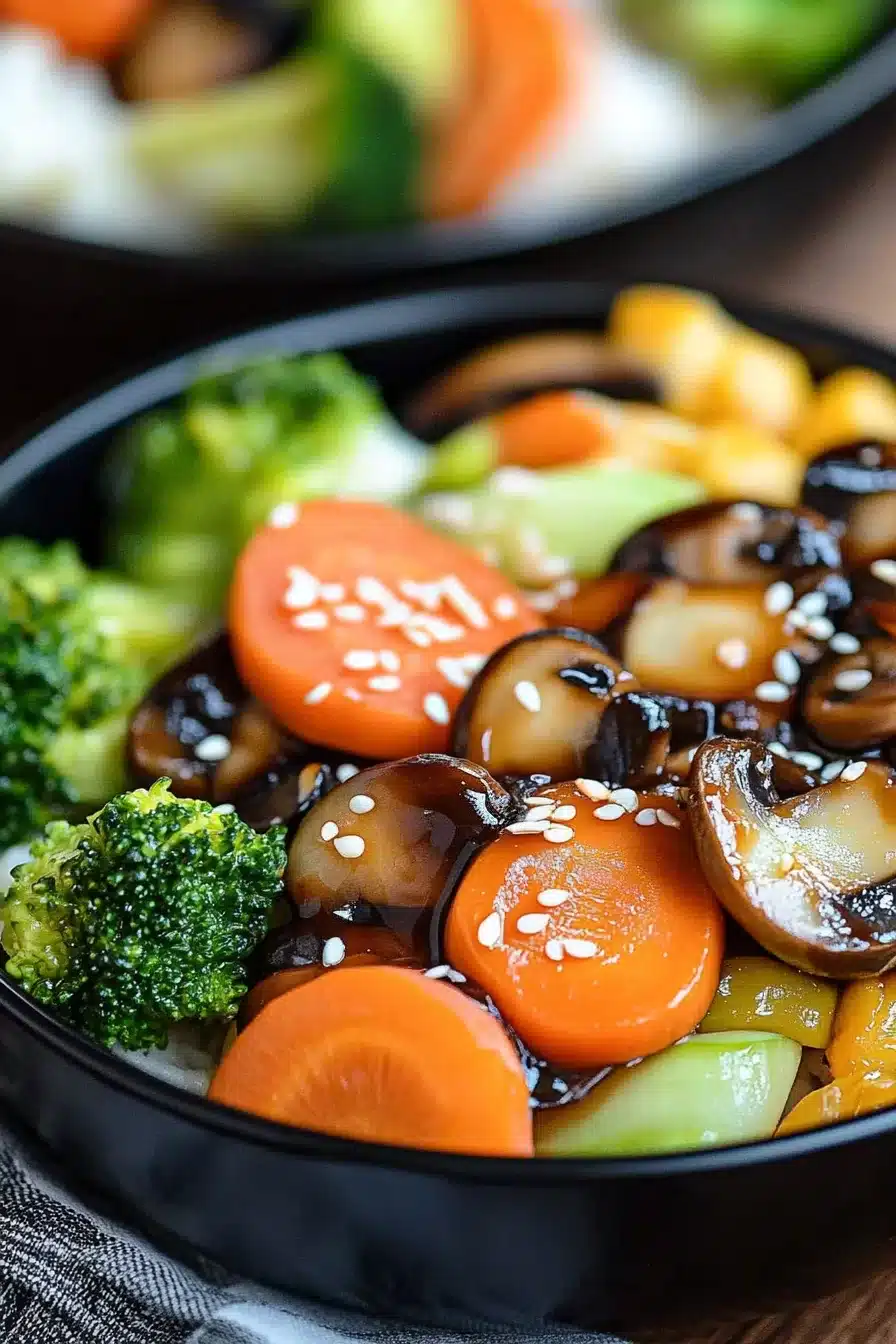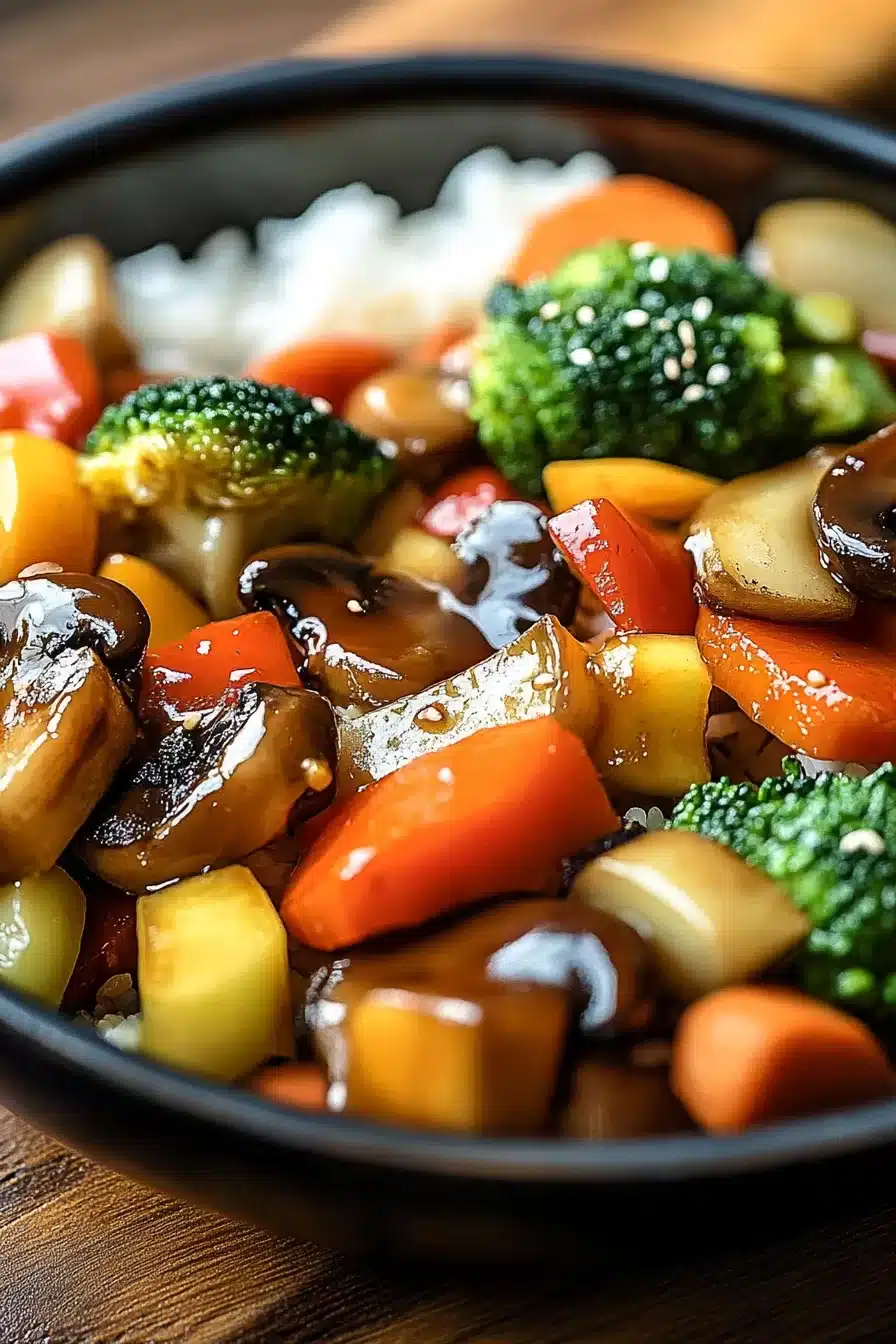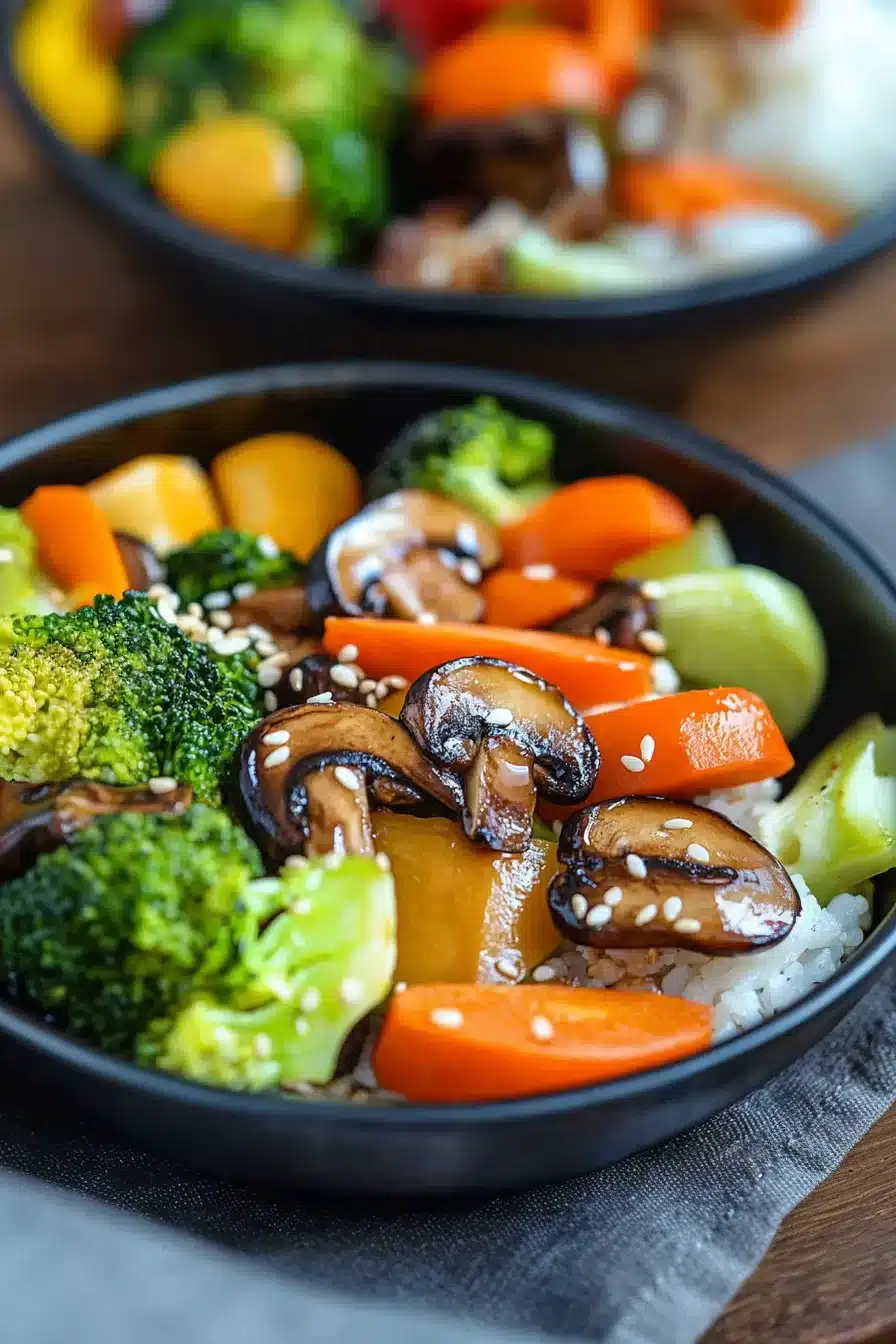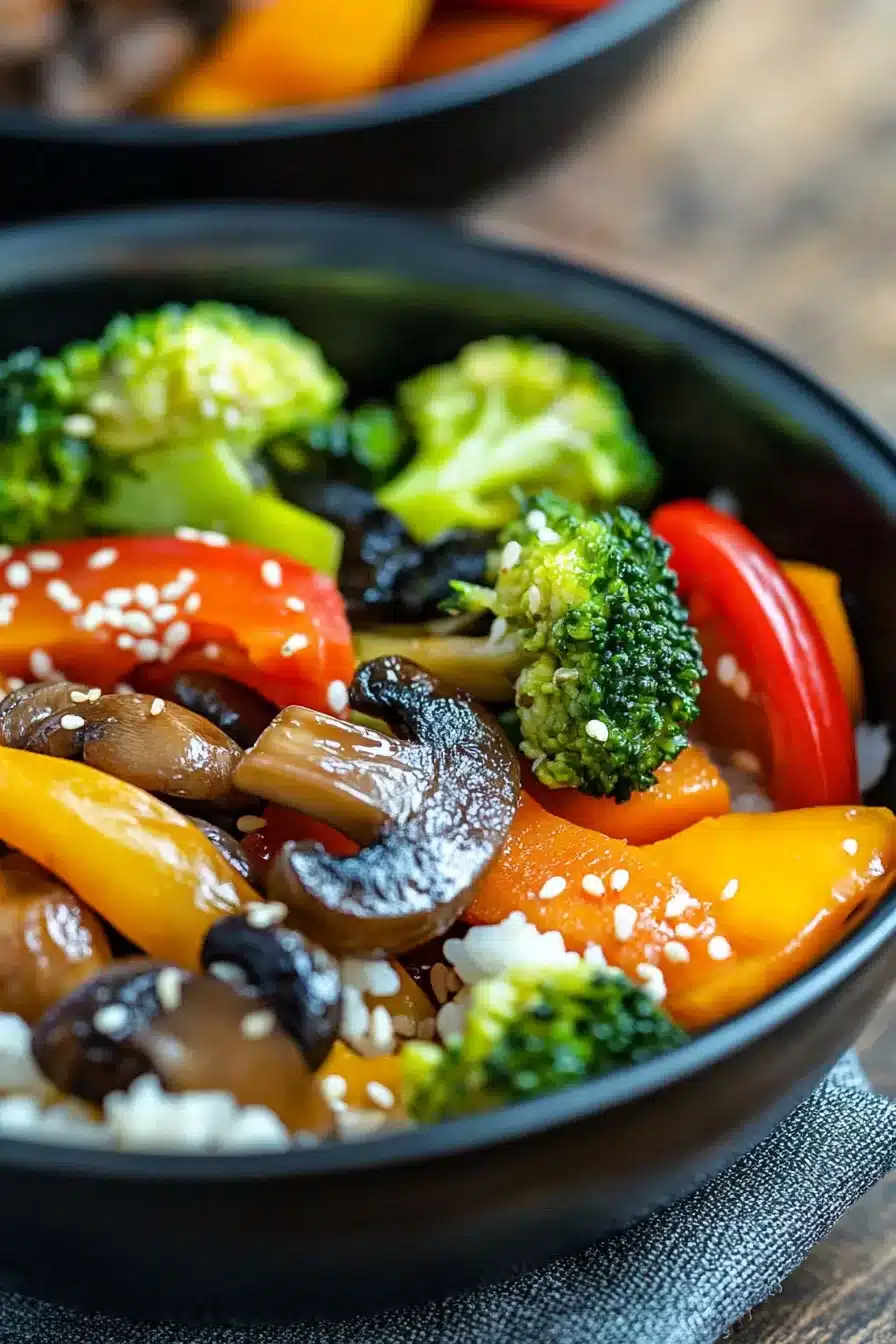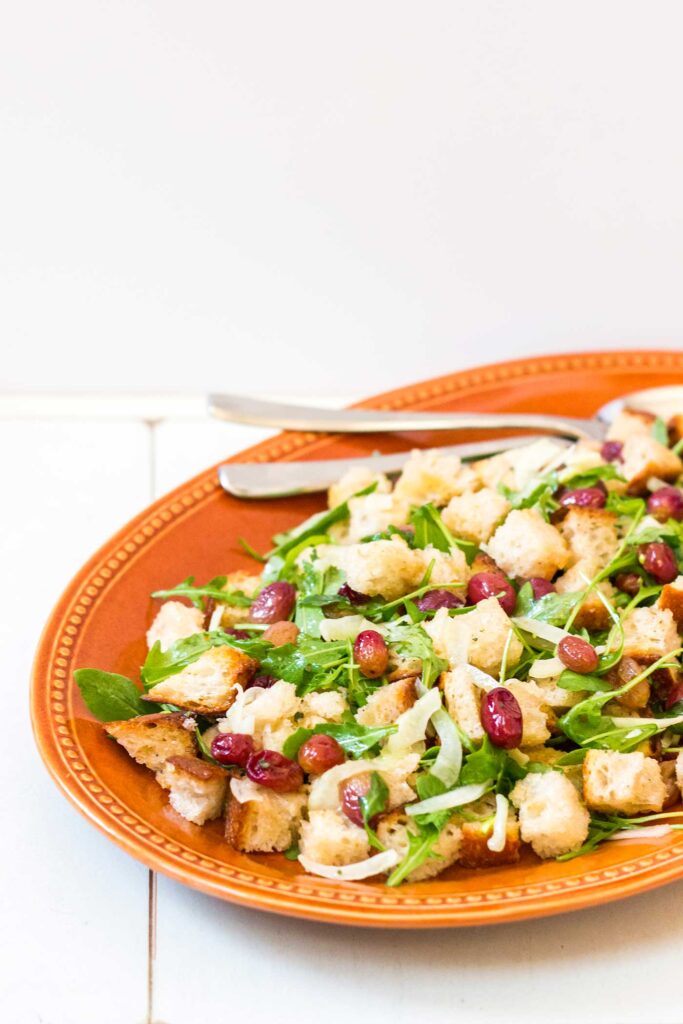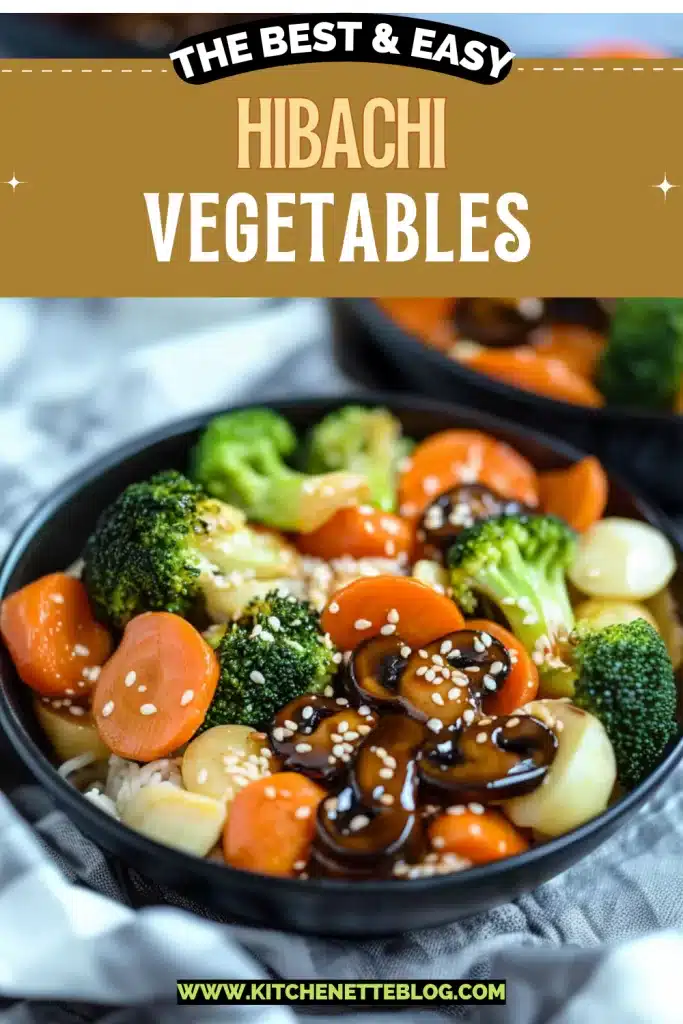
Bold stir-fried flavor meets cozy takeout vibes in these hibachi vegetables made with mushrooms, zucchini, carrots, and soy-savory magic. You’ll be sneaking bites straight from the pan.
This is one of those weeknight wonders that tricks your brain into thinking you ordered something naughty, but—surprise—it’s mostly just fast-cooked veggies with garlic, a little oil, and a savory-sweet soy glaze. These hibachi vegetables are crisp-tender with a glossy finish and enough umami to make your broccoli feel exciting again. I love them piled over steamed rice, or next to something fancy-but-easy like pan-seared cod. Oh, and if you happen to have leftover rice hanging around your fridge… well, you probably already know the move. (But yes, you can freeze cooked rice.)
Table of Contents

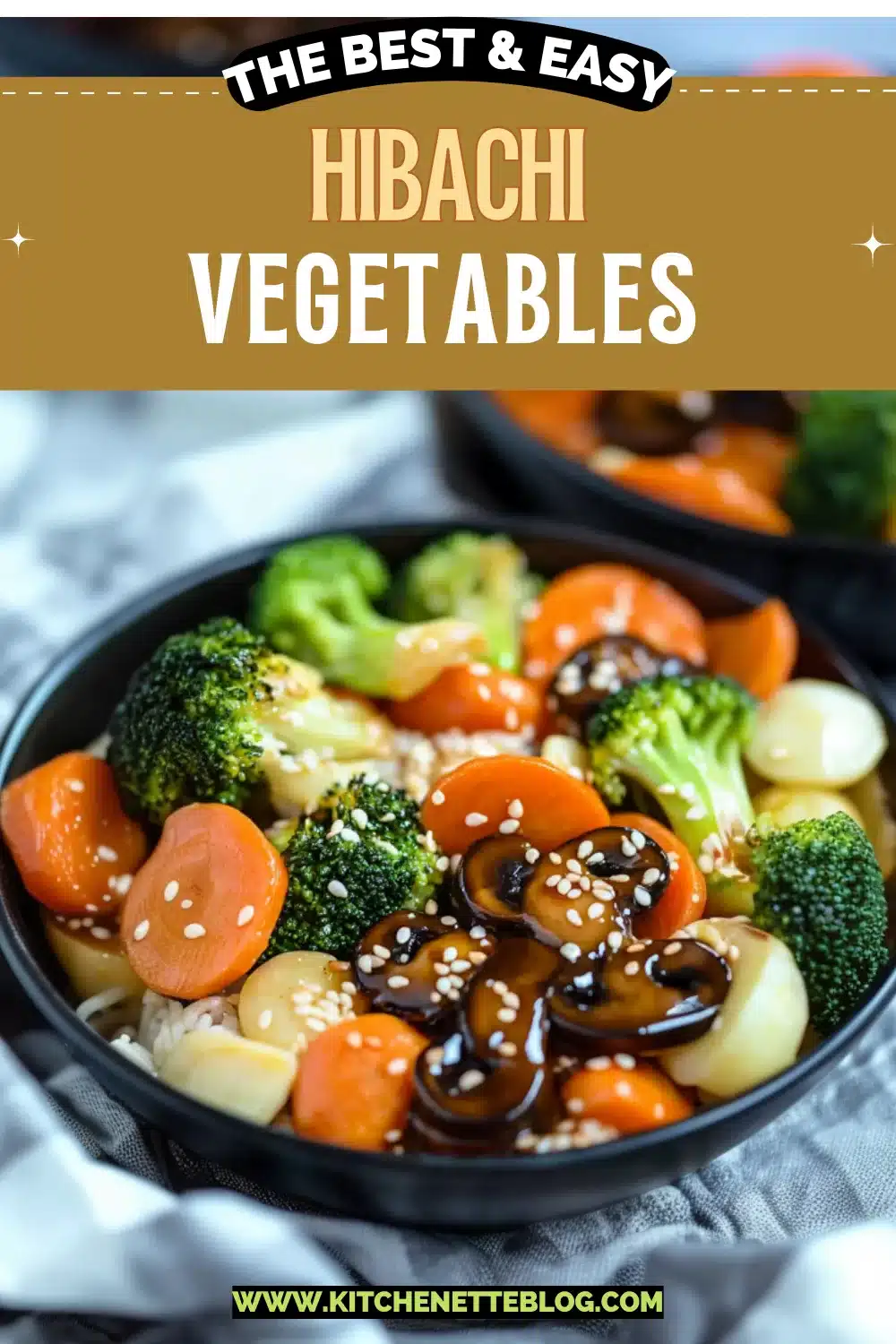

Don’t let this one slip away — pin it now and thank yourself later!
Don’t let this one slip away — pin it now and thank yourself later!
Why You’ll Love this Hibachi Vegetables
Let’s not overthink it—sometimes, veggies just need to be hot, glossy, and touched by garlic and sesame oil.
- Ridiculously simple to make: You toss everything into a hot pan and stir with gusto. It’s more therapeutic than therapy (well, almost).
- Better than takeout vibes: That satisfying mix of sizzle, soy, and steam feels straight out of a teppanyaki grill show.
- Flexible and forgiving: Forgot the mushrooms? Don’t sweat it. This dish rolls with substitutions like a champ.
- Naturally vegan (if you care): No need to source tofu or tempeh, though you could… you know, jazz it up.
- Works with anything: Rice, noodles, protein pals—just a spoonful makes the whole plate feel intentional.
Ingredient Notes
This lineup isn’t complicated, which is exactly how we like our dinners at 6:30 p.m. on a random Tuesday. Here’s a quick rundown:
- Vegetable oil: A neutral cooking oil that lets the sesame do its thing. Use avocado oil if you’re feeling fancy.
- Sesame oil: Pure magic in drop form. Adds instant depth. Don’t skip it unless you’re out, in which case, just add a teensy splash of tahini near the end.
- Garlic: Two cloves, finely minced. You’ll smell it the second it hits the oil—honestly, it’s the best part of the cooking process.
- Yellow onion: Brings a mellow bite once softened. Wedges cook quickly but still give that slight crunch.
- Zucchini: The humble zucchini ends up golden-edged and savory here. Slice into half-moons so they don’t vanish into mush.
- Baby carrots: Sliced into coins for faster cooking. They add sweetness and a nice firm bite.
- Broccoli florets: Chop ’em small so they stir-fry evenly. Adds color and a chewy crunch.
- Mushrooms: Slice them thick so they hold their shape. Shiitake or baby bellas work great.
- Low-sodium soy sauce: Salty and deep. Go low-sodium so you have more control over the saltiness.
- Mirin: Adds a whisper of sweetness and shine. It’s subtle but totally worth it.
- Sesame seeds: Toast them lightly. Adds nuttiness and a little crunch sparkle at the end.
- Black pepper: Freshly ground is best, and add it to taste right at the end.
How To Make This Hibachi Vegetables
You don’t need restaurant gear or ninja knife skills, promise. Just a hot pan and a bit of confidence (plus garlic, obviously).
-
Heat your oils: Stir together the vegetable and sesame oils in a big wok or skillet over medium-high heat. Let them shimmer for a sec, then toss in the garlic and onions. Cook for about 1 to 2 minutes until everything smells like happiness and the onions start softening.
-
Add the colorful bunch: In go the zucchini, carrots, broccoli, and mushrooms. Give it a big toss and stir-fry for 3 to 4 minutes. Let things get a little color but keep them moving—this isn’t the time for a coffee break.
-
Soy-mirin splash: Pour in the soy sauce and mirin. It’s going to sizzle a bit and coat the veggies in a light, glossy layer of flavor. Stir to get everyone evenly dressed.
-
Finish cooking: Keep stir-frying another 5 to 7 minutes, depending on how crisp-tender you like your vegetables. Taste one. If it sings, you’re there.
-
Pepper it up and serve: Right before turning off the heat, crack some black pepper in there and give it a final toss. Scoop into serving bowls, sprinkle with sesame seeds, and serve hot.
Storage Options
Alright, so maybe you went a little heavy-handed with the broccoli. Good news: leftovers are your friend.
Fridge-wise, these hibachi vegetables keep well for about 3 days in a sealed container. That said, they’ll lose a little of their snap over time. Still tasty, just softer. Perfect for fried rice or tossing into ramen the next day.
Can you freeze it? Sort of. Technically yes, but fair warning: veggies tend to get a bit soggier when thawed. Still fine if you’re meal-prepping or planning to throw them into soups or noodles later.
To reheat, a skillet over medium heat with a drizzle of oil is your best friend. Microwaving works in a pinch, but you’ll lose some texture. A quick stir-fry revitalizes the flavors and perks those veggies right back to life.
Variations and Substitutions
Love to edit while you cook? Me too. Here are some swaps and spins to keep things fresh.
- Different veggies: Try thinly sliced bell peppers, snap peas, or shredded cabbage if you need to clean out the fridge.
- Add protein: Toss in tofu cubes, sliced steak, or shrimp toward the end. Let them mingle with the sauce a bit.
- Use teriyaki instead: Swap the soy sauce and mirin for a bit of teriyaki sauce. It’s sweeter, more intense, and totally chewy-saucy.
- Spicy version: Add a pinch of red pepper flakes or a few dabs of chili paste to the oil as it heats up.
- No mirin on hand? Try a splash of rice vinegar and a pinch of sugar. Close enough for weeknights.
What to Serve with Hibachi Vegetables
These veggies love making friends—they’re the ultimate extroverts of the plate.
-
A big ol’ bowl of jasmine or short-grain rice is classic, but don’t overlook the freezer bag of leftovers—yep, you can totally freeze rice and reheat for convenience.
-
Grilled or seared protein like salmon, steak, or even a pan-fried tofu steak works perfectly. I love spooning the veggies beside this oven-cooked filet mignon for an upscale twist.
-
Slurpy noodles dressed in sesame-soy sauce or peanut dressing make it feel like a noodle bar at home. Udon, soba, ramen—all welcome.
-
For a light lunch, toss the cooled veggies over a leafy salad with edamame and a little extra sesame oil for dressing.
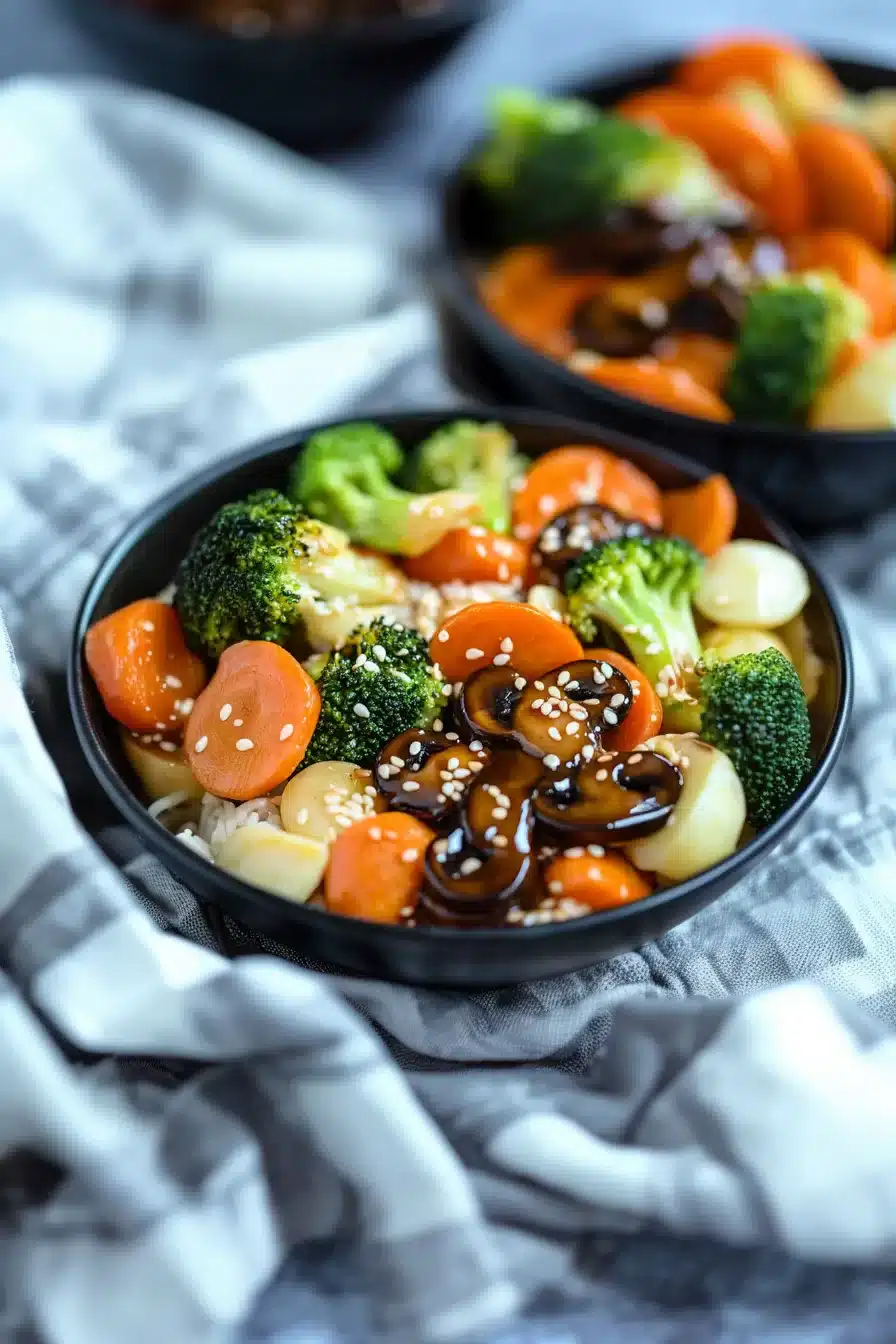

Don’t let this one slip away — pin it now and thank yourself later!
Don’t let this one slip away — pin it now and thank yourself later!
Frequently Asked Questions
Can I make hibachi vegetables ahead of time?
Yep, you absolutely can. These veggies hold up well for about 2 to 3 days in the fridge. Just know they’ll lose a little crunch as they chill. If you plan to reheat, a quick sauté in a hot pan with a splash of oil will bring them right back to life. I like to keep a batch prepped and toss them into rice or quick noodle bowls all week long.
Do I need a wok to make hibachi vegetables?
Nope. A large skillet will do just fine. The key is having enough surface area so the veggies cook evenly and quickly. You want high heat so things caramelize a bit, not steam into mush. If you’re using a nonstick pan, just make sure it gets properly hot before adding anything.
Is there a substitute for mirin?
If you don’t have mirin, don’t despair. Try a splash of rice vinegar combined with a pinch or two of sugar. It won’t be identical, but it’ll still add a nice touch of brightness and balance to the soy sauce. You could also use dry sherry if that’s hanging out in your pantry.
Can I use frozen vegetables instead of fresh?
You can, but with a few caveats. Frozen veggies release more water, so the final stir-fry might come out softer and a little steamier. If that doesn’t bother you, go ahead and use them—just chuck them straight into the hot pan without thawing, and cook off any excess moisture before adding sauces.
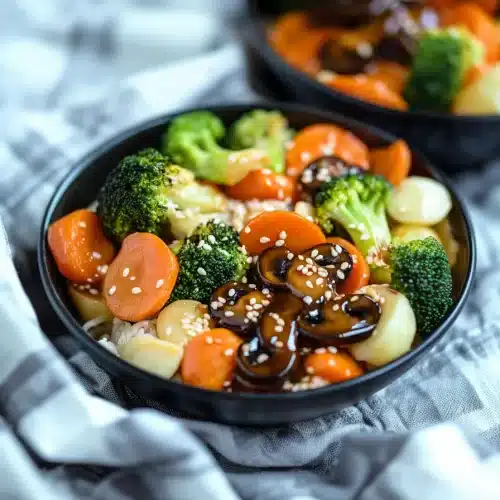
Hibachi Vegetables
Ingredients
Vegetables & Aromatics
- 1 tbsp (15 ml) vegetable oil or avocado oil
- 2 tsp (10 ml) sesame oil toasted
- 2 cloves garlic finely minced
- 1/2 (0.5) yellow onion cut into wedges
- 1 zucchini sliced into 1/4-inch half-moons
- 1 cup (130 g) baby carrots sliced into coins
- 2 cups (150 g) broccoli florets chopped small
- 1 cup (70 g) mushrooms thickly sliced (shiitake or baby bella)
Sauce & Finish
- 2 tbsp (30 ml) low-sodium soy sauce
- 2 tsp (10 ml) mirin
- black pepper freshly ground, to taste
- 1 tbsp (9 g) sesame seeds lightly toasted, for serving
Equipment
- Large Wok or Skillet
- Cutting board
- Sharp knife
- Measuring spoons
Instructions
- Heat your oils: In a large wok or skillet over medium-high heat, add the vegetable oil and sesame oil. Once shimmering, add the minced garlic and onion. Stir-fry for 1 to 2 minutes, until fragrant and the onions start to soften.
- Add the vegetables: Add the zucchini, sliced carrots, broccoli florets, and mushrooms. Stir-fry for 3 to 4 minutes, tossing frequently so the veggies get a little color but stay crisp-tender.
- Soy-mirin splash: Pour in the soy sauce and mirin. Continue stir-frying, tossing everything to coat evenly and let it cook for another 5 to 7 minutes until vegetables are just tender with a little bite.
- Pepper and serve: Finish with freshly ground black pepper to taste. Remove from heat, scoop into serving bowls, sprinkle with sesame seeds, and serve hot.

